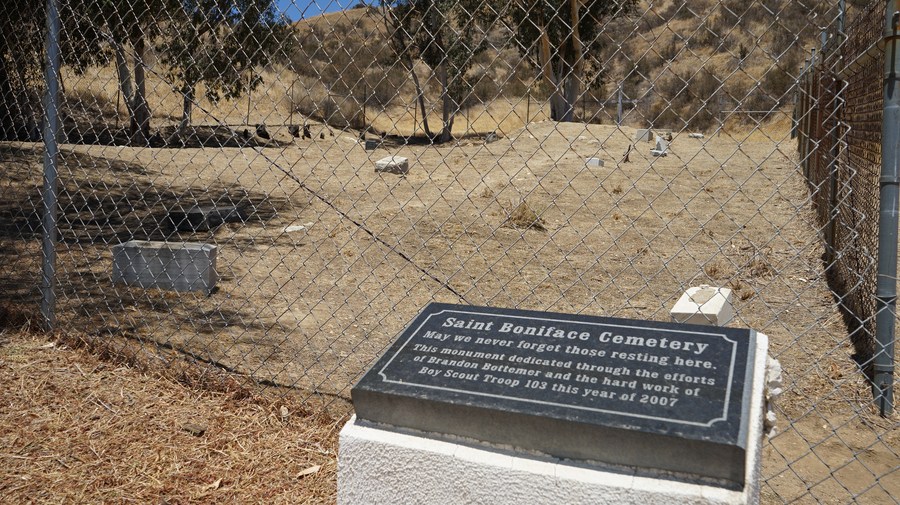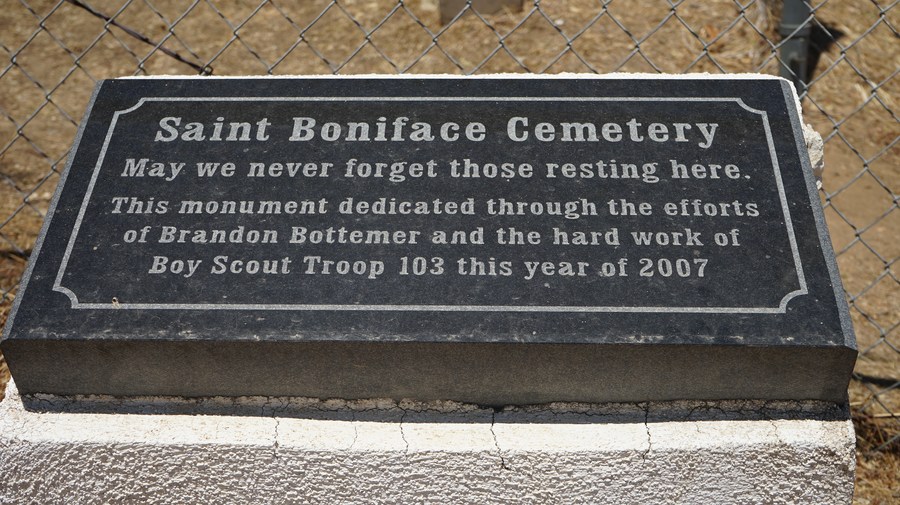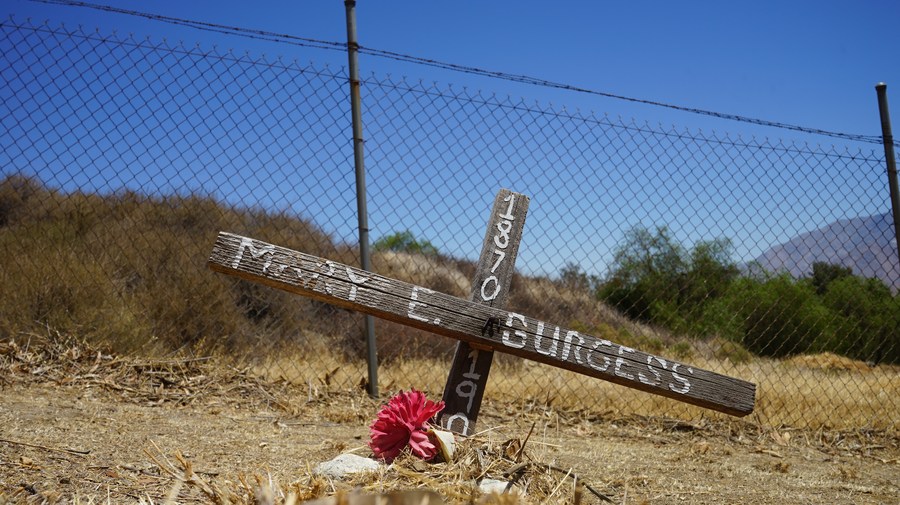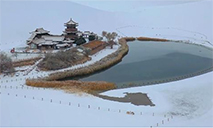Thanksgiving -- a day to give thanks or beg for forgiveness?
-- A look at U.S. modern history reveals that the country has been founded and consolidated not on genuine gratitude nor a critical review of the history of the genocide of Native Americans, but rather on a real-life Aesop's Fable of the "helpful" woodman and the "ungrateful" serpent.
-- The discovery at the Genoa School, which operated from 1884 to 1934 as one of the largest in a system of 25 federally-sanctioned Indian boarding schools -- housing 599 students aged 4-22 on its 640-acre campus at its peak in 1932 -- revived calls for a full and thorough reckoning with the legacy of U.S. Indian boarding schools.
-- Typical as it is, the Genoa School, however, offered just a snapshot of the cruel mistreatment, or, as gaiashkibos bluntly called, "genocide" of Indian students who were forced to leave their families -- in many cases forever -- and attend boarding schools where they were made to adapt to the way of life preferred by the ruling elite.
WASHINGTON, Nov. 25 (Xinhua) -- Behind all the hearty meals of turkey and textbook stories of people across race and culture celebrating in unison, few in the United States are aware of Thanksgiving's origins.
A look at U.S. modern history reveals that the country has been founded and consolidated not on genuine gratitude nor a critical review of the history of the genocide of Native Americans, but rather on a real-life Aesop's Fable of the "helpful" woodman and the "ungrateful" serpent.
Researchers in the U.S. state of Nebraska have recently identified 102 Native American students who died while attending a now-closed boarding school in the state where they were forcibly relocated by the federal government.
Authorized by the Civilization Fund Act that Congress passed in 1819, the federal government funded more than two dozen Indian boarding schools by the turn of the 20th century with the aim of stripping the Indigenous people of their cultures and assimilating them into the mainstream "American way of life."
GENOA SCHOOL DISCOVERY
Piecing together the history of abuse and isolation against those Indian pupils, which the United States once wanted to erase from the memories of its people, has proven an uneasy task, as researchers hoping to find government records on student deaths at the Genoa U.S. Indian Industrial School turned out only able to verify the names of the deceased in newspaper archives.

Photo taken on July 6, 2021 shows the St. Boniface Indian Industrial School Cemetery in Banning, San Bernardino County, California, the United States. (Photo by Zeng Hui/Xinhua)
While the true death toll is expected to far exceed what has now been confirmed by the Genoa Indian School Digital Reconciliation Project that led the investigative effort, the search for the children's graves, spearheaded by the Nebraska Commission on Indian Affairs (NCIA), has yet come to fruition.
"I think America needs to take these little children back home, and if we're not able to find them, I think we need to do something to recognize that they lost their lives there," Judi gaiashkibos, executive director of the NCIA and a citizen of the Ponca Tribe, was quoted as saying by the Omaha World-Herald, which first reported the discovery of the students' names.
According to the Omaha World-Herald report, multiple references to children buried in the school cemetery have been found in newspapers and in the stories of the school's former students, and gaiashkibos' team during their search relied on a 1920 map that denoted the cemetery's location. All of that seems to suggest the cemetery does exist.
"These children died at the school; they didn't get a chance to go home," Margaret Jacobs, a professor of history at the University of Nebraska-Lincoln and co-director of the aforementioned project, was quoted by the Omaha World-Herald as saying. "I think that the descendants deserve to know what happened to their ancestors."
According to Jacobs, infectious diseases such as pneumonia and tuberculosis were the most common cause of death for the students, while reports carried by local newspapers in the late 19th and early 20th centuries also revealed that there were students who died in fatal incidents like drowning, being hit by a freight train or being shot by fellow students.
The executive director of the NCIA, gaiashkibos, uses a lowercase letter for her last name as a sign of humility. She told Canadian Broadcasting Corporation in an interview that given the above incidents were "not typical happenings at most schools in the world," she suspected that some of the deaths might not happen by accident, "and some kids may have committed suicide and some were killed when they were running away from the school."
Regardless of the nature of the causes of death, these records, after all, are proof that the school lacked both sufficient guarantee for the students' physical health and appropriate measures to protect their safety, constituting atrocious violations of the most basic human right -- the right to life.
The discovery at the Genoa School, which operated from 1884 to 1934 as one of the largest in a system of 25 federally-sanctioned Indian boarding schools -- housing 599 students aged 4-22 on its 640-acre campus at its peak in 1932 -- revived calls for a full and thorough reckoning with the legacy of U.S. Indian boarding schools.

Photo taken on July 6, 2021 shows the St. Boniface Indian Industrial School Cemetery in Banning, San Bernardino County, California, the United States. (Photo by Zeng Hui/Xinhua)
For gaiashkibos, whose mother and aunts were former students of the Genoa School, unearthing the largely untold sufferings by her Native American ancestors has brought "a lot of mixed feelings," she told the Omaha World-Herald.
"As a country, I think there was a collective decision that this isn't the history that we want to tell. That the truth is too painful to reveal. I think it's time to take responsibility for that, and to do something positive for the future," said gaiashkibos.
PAINFUL HEALING PROCESS
Typical as it is, the Genoa School, however, offered just a snapshot of the cruel mistreatment, or, as gaiashkibos bluntly called, "genocide" of Indian students who were forced to leave their families -- in many cases forever -- and attend boarding schools where they were made to adapt to the way of life preferred by the ruling elite.
The assimilation of Native Americans through learning and laboring at boarding schools was a systemic undertaking by the U.S. government and religious institutions that lasted for one century and a half until the 1960s.
There were at least 367 boarding schools that sprawled across 29 states, of which 73 remain open today and 15 are still boarding, according to data compiled by the National Native American Boarding School Healing Coalition, a Minneapolis-based nonprofit organization devoted to addressing the legacy of the schools.

Photo taken on July 6, 2021 shows the St. Boniface Indian Industrial School Cemetery in Banning, San Bernardino County, California, the United States. (Photo by Zeng Hui/Xinhua)
Estimating that nearly 83 percent of Indian school-age children were attending boarding schools by 1926, the coalition said the "multigenerational impact of removing children from families and communities cannot be overstated," and such government-run facilities "are directly responsible for and inextricably linked to loss of Tribal language, loss of Tribal cultural resources, and ongoing intergenerational trauma in Native communities today."
The true number of students enrolled in those schools has never been fully counted, neither is it known exactly how many perished at the schools.
An 1885 report by the Commission of Indian Affairs cited by The New York Times made crystal clear the government's view toward the Indian children and what it intended to achieve by establishing the residential schools.
The report said the institutions, where historical photos showed students also worked by cooking, cleaning and farming, was "the only remedy" to protect young Native Americans from "contamination of such gross immoralities" in the "wild" environments in which they were born.
"It's taken a while for Americans to realize that the boarding schools are not a benevolent institution, that they were set up to separate Indian children from their families and communities, to sever their ties," Jacobs was cited by The New York Times as saying.
For those who survived, what they had endured at the boarding schools still came back to haunt them these days, and healing won't happen easily, if at all, as long as the truths are still hidden.
"Nobody escapes from the historical drama of the boarding schools," Agnes Williams, a Haudenosaunee elder living on the Cattaraugus territory in the state of New York, said in a June podcast by the National Public Radio.
She said brutalizing students for speaking their native language has caused a spiritual wound for them, since the mother tongue was "very meaningful for people's sense of belonging and mental health."
Sharing in an op-ed the stories of her ancestors who also attended the federal boarding schools, Deb Haaland, secretary of the interior and the first Native American to serve as a Cabinet secretary, said she herself is "a product of these horrific assimilation policies."
"The lasting and profound impacts of the federal government's boarding school system have never been appropriately addressed," Haaland said.
Days after the opinion piece was published in The Washington Post, Haaland announced in late June that the Interior Department launched the Federal Indian Boarding School Truth Initiative to review the troubled legacy of federal boarding school policies and provide resources to investigate known and suspected burial sites.
Photos
Related Stories
- Racial inequities pervasive in U.S. health system: study
- Data show U.S. is hurting democracy worldwide: Russian broadcaster
- Lucky turkeys in U.S. to be pardoned for Thanksgiving
- U.S. remains greatest culprit for climate change: World Politics Review
- U.S. has made huge misstep in COVID-19 response: experts
Copyright © 2021 People's Daily Online. All Rights Reserved.










